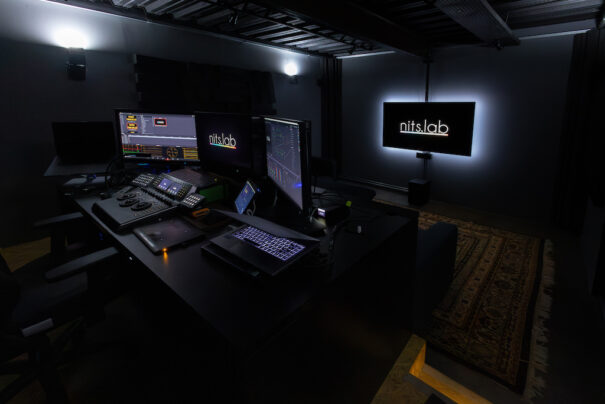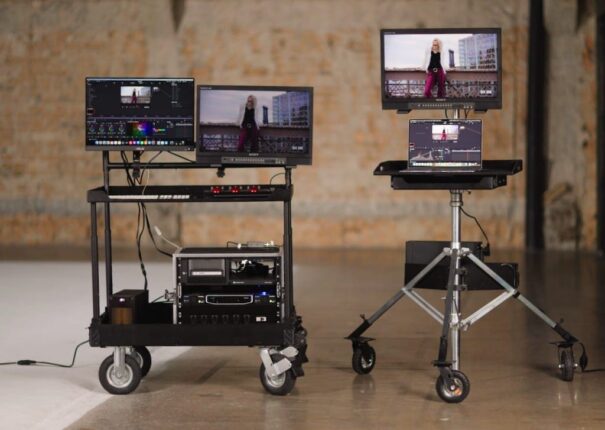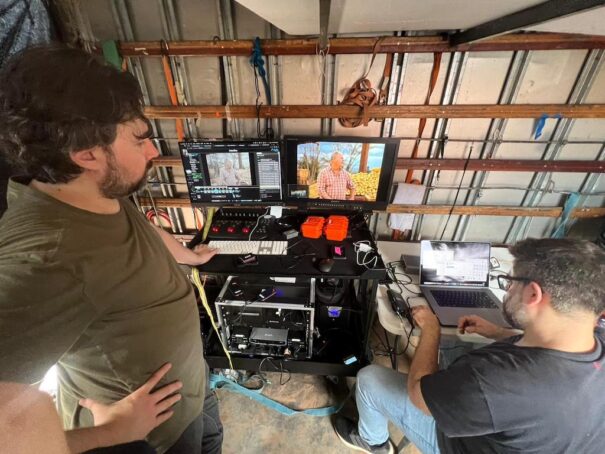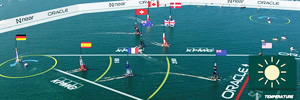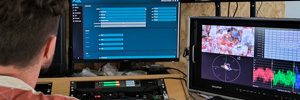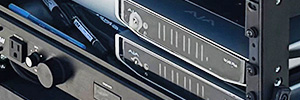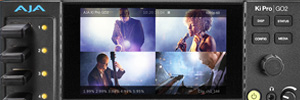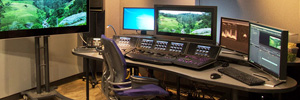Nits.Lab explores the creative possibilities of HDR with the help of AJA
The studio Brazil-based Nits.Lab launched earlier this year to provide HDR-capable Digital Imaging Technician (DIT) and post-production services to clients in Latin America with the help of AJA.
With technology like ColorBox, its team is supporting commercial, episodic, documentary, and feature productions across the region to embrace this evolving storytelling format and unlock its myriad narrative advantages.
“We do most of our work in SDR, but client preferences are slowly shifting to HDR,” said Nits.Lab Co-Founder Rodrigo Bodstein. “It’s gaining momentum here in Brazil as the major streamers show the narrative possibilities of HDR, and quite a few of the larger studios, as well as a few post houses, are already experimenting with HDR delivery. We’re working to help the market transition, and make HDR more accessible here. We want to give professionals the tools they need to get up to speed on HDR and explore its narrative implications, so they can continue pushing content forward visually.”
To support its mission, Nits.Lab built a state-of-the-art facility and DIT cart including two AJA ColorBox color converters, an AJA Io 4K Plus for I/O, and an AJA KUMO 3232-12G router to help manage color across SDR and HDR productions.
For on-set work, its two-person crew leverages the DIT cart technology alongside a range of monitors. The Colorfront Engine and the AJA Color Pipeline in ColorBox are used for transformations when reviewing SDR and HDR content side by side, in addition to the Colorfront streaming server for remote reviews. The team also anticipates adding a third ColorBox into its studio color suite to be able to send signals to another TV for client viewing.
Nits.Lab’s workflows vary on a project basis and whether or not they’re in the studio or on-set, but each is designed around 12G-SDI routing. In one of its designs, a Mac Studio is the main station for live grading, while a MacBook Pro supports ingest and offload. An AJA KUMO 12G-SDI router sits at the center of the signal path, giving the team full control over signal distribution and routing. They set up a salvo for each specific workflow on the KUMO, enabling them to save different profiles for different types of work. For example, one salvo is set up for live grading, one for broadcast, and another for color grading, color correction, VFX, and editing work.
For live grading, the inputs and outputs of two AJA ColorBoxes, an AJA Io 4K Plus, and two Sony monitors are linked to the KUMO. Camera signals are fed through the AJA KUMO router into the Io 4K Plus and through the ColorBoxes to the monitors. One monitor is set in SDR and the other in HDR. The NitsLab team uses Pomfort Livegrade Pro software to control the dynamic LUT in the AJA Color Pipeline in ColorBox. Since its work is typically centered around an ACES pipeline, Nits.Lab regularly leans on the integration of Pomfort Livegrade Pro and Pomfort Silverstack Lab to create dailies with all the demands for each client (burn-ins, metadata etc.). This helps ensure color consistency throughout the process.
Commenting on the workflow, Nits.Lab Co-Founder Rafael Lopes said, “It’s important for project stakeholders to be able to see HDR footage alongside SDR footage. They may not need to understand how the PQ curve works, or why 12-bit signals are necessary, but they need to feel the difference and how it impacts the final product. We want them to see how they can control the image with HDR, even if some lenses have flares in HDR that don’t work. AJA solutions, in tandem with Colorfront, help us achieve this and are amazing at shaping HDR in live and on-set situations. We love and use them both a lot.”
Nits.Lab also taps AJA Io 4K Plus for computer I/O, which includes four bi-directional 12G-SDI inputs, to send test patterns to its monitors for some HDR projects that require express captures for dailies. Outside of its 12G-SDI workflow demands, the team also uses the Tangent Wave control panel, a Stream Deck where they keep shortcuts, RAID storage, and a 40TB drive for backup and transport. All this technology is connected to a Mac Studio M1 Ultra with 128GB RAM via ethernet via a switch. A CalDigit TS4 hub with the pro-grade media readers and the MacBook Pro M1 Max with 2TB and 64GB RAM are also part of the workflow design. In addition to these tools, for remote workflows, Nits.Lab also employs the Colorfront Streaming Server, a cloud media management and collaboration tool, and the Pomfort ShotHub.
Real-time ColorBox pipeline
Both Lopes and Bodstein enjoy leveraging these powerful setups in their day-to-day work with clients. Said Lopes, “Our goal is to help clients get comfortable with HDR, and have room to experiment live. Our AJA solutions are a key enabler in this respect as they make it easier to propose new options and color tests for clients. The real-time ColorBox pipeline is essential. We can experiment on set, see the results, adjust in real time, and easily pass guidance and direction along to the post facility in the color suite for greater look consistency. Knowing the vision, the look you established and recorded on set, and that the intent will be carried through until final delivery is invaluable.”
Bodstein concluded, “I get a thrill from balancing the colors and seeing the impact it has on people’s emotions in a collaborative environment, especially when everything just locks into place, and it feels right. It’s like we’re designing feelings, and that’s truly a rewarding job.”
Gostou deste artigo?
Subscreva o nosso Alimentação e você não vai perder nada.



